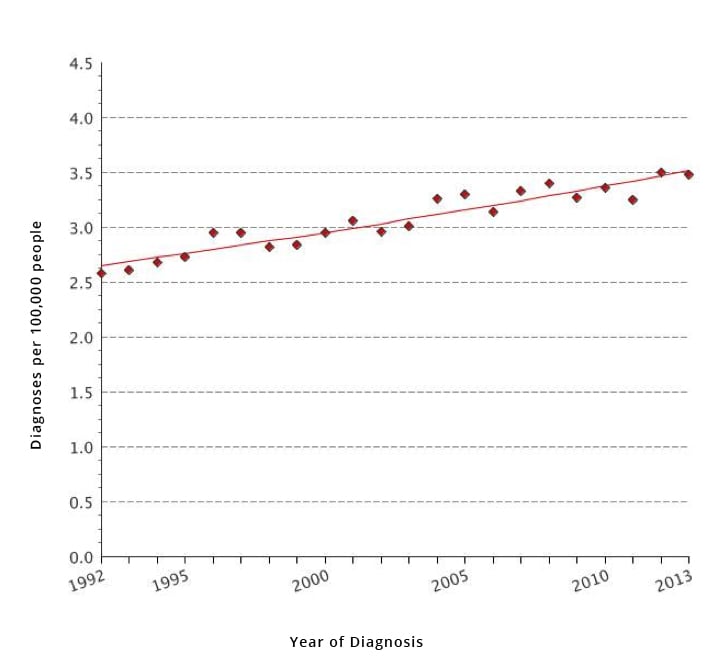Sarcoma Facts
Rates of soft tissue cancer cases in the U.S. (both sexes)
 Rates for U.S. population. Data from the National Cancer Institute Surveillance, Epidemiology, and End Results Program. SOURCE: National Cancer Institute Surveillance, Epidemiology, and End Results Program, at seer.cancer.gov
Rates for U.S. population. Data from the National Cancer Institute Surveillance, Epidemiology, and End Results Program. SOURCE: National Cancer Institute Surveillance, Epidemiology, and End Results Program, at seer.cancer.gov- Sarcomas are cancers that originate in bone or connective tissue, including fat, nerves, muscle and cartilage.
- They are relatively rare, but they’re dangerous because they often go undetected until the tumor has grown large.
- Any chronic or prolonged on-and-off soreness or swelling could be a symptom of a sarcoma.
- A doctor should examine lumps, especially those that grow.
Prevention Tips
- Risk factors for sarcoma include many of the same things that put you at risk for cancer in general. See EWG’s 10 Household Tips for Cancer Prevention.
- Reduce arsenic exposure. Arsenic is a natural water contaminant in some areas. Consider using a filter certified to remove arsenic. It is also found in some foods, especially rice.
- Radiation and exposure to industrial chemicals such as vinyl chloride, a chemical used in the production of PVC, can also increase the risk of developing sarcomas. Vinyl chloride is an occupational hazard and can also contaminate drinking water. Another reason to filter your tap water.
- Avoid and seek alternatives to pesticides. Mulch, landscape fabrics, manual weeding and homemade solutions of salt and vinegar or soap can help kill weeds. EWG’s Dirty Dozen can help you identify and avoid produce with the highest levels of pesticide residues.
Disqus Comments